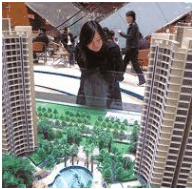
The bluster over Australia’s nascent apartment construction boom has shifted into overdrive, with The AFR’s Rebecca Thistleton declaring that apartment living could become the new norm nationally as Australia’s population surges towards 37.6 million by 2050:
…apartment living could become a nationwide trend if the population reaches 37.6 million by 2050, as is forecast by the Australian Bureau of Statistics…
Affordability is definitely the driver of the boom, rather than a desire for apartment living ahead of traditional housing, agrees Kim Hawtrey, associate director of property research company BIS Shrapnel.
Hawtrey says equal numbers of apartments and houses were being built for the first time in Sydney’s history – houses have previously dominated the city’s landscape. And the shift is structural, not just cyclical…
Shorter commute times and the lack of work opportunities on the fringe of the city make inner areas more desirable than outer suburbs with cheaper housing.
Socially, people want to stay in their existing communities with easy access to services – a common wish, in particular, among first home buyers and downsizers.
An analysis of the ABS’ dwelling approvals data at the capital city level does indeed show that apartment approvals have surged, although it is really and East coast phenomenon:
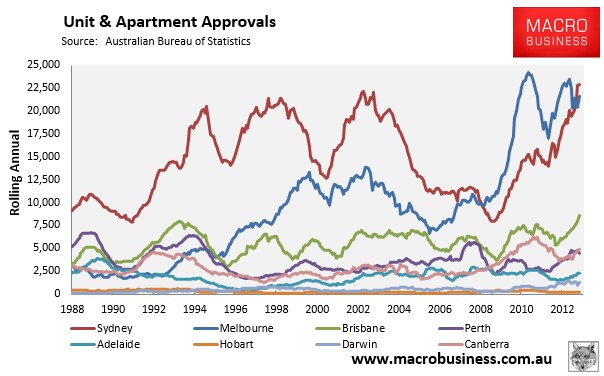
Moreover, units & apartments are now the predominant form of dwelling across the East coast capitals and Darwin, comprising just over 50% of total approvals in Melbourne and Brisbane, and nearly 70% of approvals in Sydney, Darwin and Canberra (see next chart).
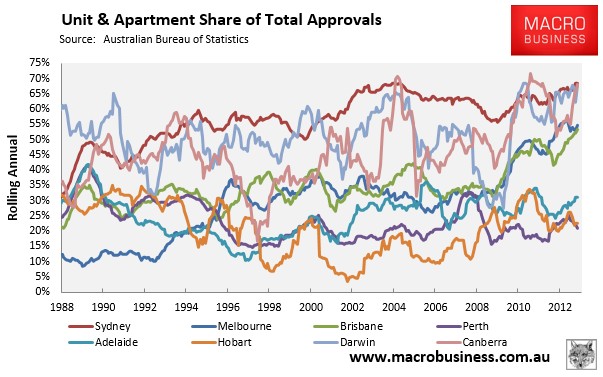
As noted yesterday, there are likely to be a number of factors driving the East Coast apartment boom.
To some extent, it is likely being driven by homebuyers’ genuine preference to live in the inner city and close to amenities. Equally, state governments’ urban consolidation policies, which have effectively restricted development on the fringe and forced-up overall land/housing prices, are likely driving this trend by making unit & apartment living relatively less unaffordable than detached housing.
There is also the Chinese ghost city effect in which Chinese capital is finding a home in more frequently empty apartments than would be the Australian norm. Especially so in Melbourne, as H&H reported recently.
The first point is highlighted by the escalating lot prices on the fringes of Australia’s capital cities, where small sized lots typically sell for around $200,000 ($300,000 in Sydney), making small detached starter houses unaffordable. Indeed, as shown by the below charts from RP Data, this land price escalation has been rampant, with values rising by around 250% or more across Australia’s capital cities in the decade to 2012, with the exception of Sydney where lot values were already expensive to begin with.
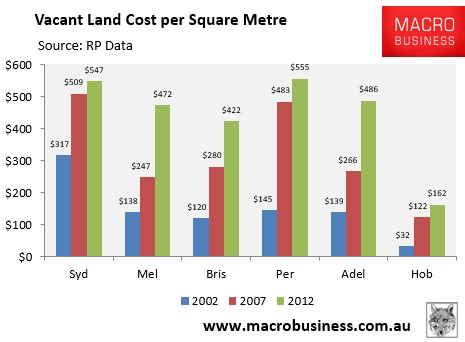
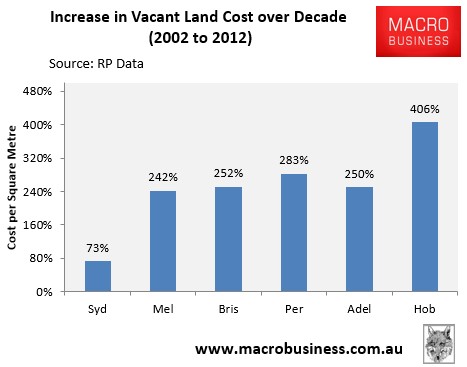
It is also important to note that while the share of unit & apartment approvals have risen, the rate of unit & apartment construction relative to population has barely budged in 30-years:
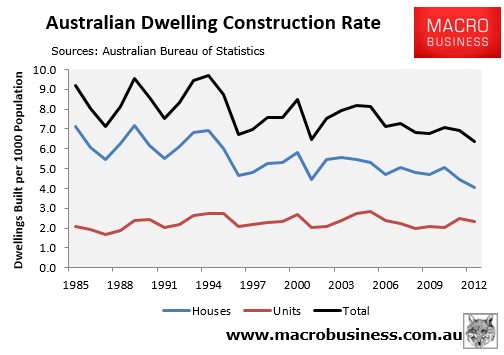
So in effect, the rate of unit & apartment construction has merely held firm while detached housing construction has fallen by the wayside – a victim of escalating land prices and tighter planning.

